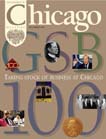The University of Chicago Magazine
December 1997


Urinary system stone was mostly caused by the retention of damp heat in the lower energizer, which steamed urine and gradually turned it into stone."
Say what?
"Modern research shows that Earthworm contains multiple vitamins and trace elements which are essential for human body. Because of strong effects and wide indications, it will play a more important part in clinical practice."
These unusual-though hardly new-ideas about health maintenance were presented at an October 1215 conference at the U of C. The first U.S.China Symposium on Chinese Herbal Medicine, jointly organized by re-
searchers from the University and the China Academy of Traditional Medicine, brought together scientists from some of the world's most technologically advanced biomedical research centers with the grand masters of the world's oldest medical tradition.
The goal was "to combine the best of both," suggested the opening speaker, Chicago radiologist Robert Beck, AB'54, SB'55, "to establish lines of contact, identify problems to attack cooperatively, and share experiences regarding the prevention and treatment of diseases."
Conference organizers, led by U of C brain-imaging specialist Chin-Tu Chen, PhD'86, knew from the start that planning the event would not be easy. First, there was the language barrier. Each of the 87 papers was presented in English, then in Chinese. More challenging, however, was the effort to connect the radically different philosophies underlying the two traditions.
Western medicine tends to focus on very specific problems, searching for the precise mechanism that causes a particular disorder, characterizing its biochemistry, and devising a targeted agent that can counteract the disease, with rigorous testing each step of the way.
Traditional Chinese medicine, on the other hand, traces illness to imbalances and deficiencies among the internal energies that govern and regulate the whole body. The practitioner strives to restore harmony, notes a recent handbook, by giving combinations of medicinal herbs with "affinities" for certain organs.
"If it's too hot, cool it down," states The Yellow Emperor's Classic of Internal Medicine, a 2,000-year-old text that remains standard reading. "If it's too cool, warm it up." And since this tradition is based on millennia of observations by healers who knew little, and cared less, about biochemistry, it always employs whole herbs, selected for their anatomical affinities and their influence on cooling or sedating "yin," or warming or stimulating "yang."
Most western scientists are be-wildered by this emphasis on yin and yang, which is further complicated by concepts like the five "elemental energies," the eight "indicators" of disease progression, or the six "evils," which are considered the primary external causes of disease. More and more western scientists, however, are increasingly interested in the potential for isolating new medicines from the active ingredients in Chinese herbs. After all, since aspirin came from willow bark and taxol from the yew tree, why not tap into a tradition that boasts 5,000 years of careful observation of the effects of more than 12,000 herbs?
The Chinese, too, appear interested in learning their counterparts' methods for studying herbal effects. Many of their presentations included not only precise percentages of patients who did and did not benefit from a therapy, but also carefully calculated "P values," a statistical measure of the probability that random variations might have altered the finding.
Few of their papers, however, met western standards of objectivity, with quantifiable markers of success or inactivity. For example, where western researchers might have focused on blood sugar and insulin levels, a paper from Qing Liu Hospital in Fujian on the use of the herb Lespedeza cuneata to treat diabetes notes only that the symptoms of thirst and overeating were "obviously improved (P<0.001)."
Many of the discussions emphasized this schism. "Have you ever done controlled trials?" asked the westerners. "We have used it for 2,000 years with good effect," answered the Chinese. "How do you know it has a good effect?" "Patients feel better."
"I think the symposium was a very good idea," sums up Taiwan-born Shutsung Liao, PhD'61, professor in the Ben May Institute for Cancer Research and a distinguished scientist with a foot in each camp. "Both sides learned something." A pioneer at using western methods to investigate the beneficial effects of compounds isolated from Chinese green tea, Liao helped persuade many of the herbal apostles of the virtues of western scientific methods. Some asked to spend a few months in his tutelage, learning research techniques.
So, despite fundamental differences, the symposium, which is intended to become an annual event, was far more harmonious than the summit meeting two weeks later between U.S. President Bill Clinton and Chinese President Jiang Zemin. No one in Chicago protested the Chinese visit. Neither side lectured the other on human rights. And plans are already under way for the second symposium in September 1998. "May the flower of friendship between our two people," hoped speaker Zhang Ruixiang, deputy president of the China Academy of Traditional Chinese Medicine, "be blossoming forever."-John Easton
Also:
